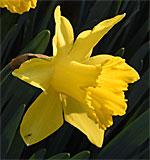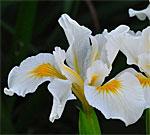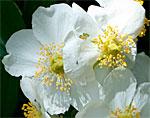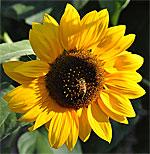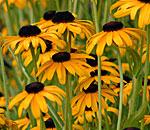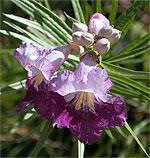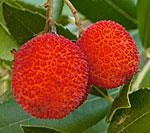|
January Though the garden appears peaceful and quiet during shorter, cooler, and usually wetter January days, not all is dormant. Many natives, such as manzanita ‘Howard McMinn’ and ‘Dr. Hurd’ are budding out and stating their bloom cycle and non-native winter bloomers including Grevillea lanigera ‘Coastal Gem’, Narcissus ‘Early Sensation’ and bush germander brighten the landscape. For information about plants that are attractive in Sacramento in January, see the WEL winter plant list. January is a month of many garden tasks. Garden chores this month include:
- Pruning – Dormant shrubs, trees, and some perennials: Prune using clean sharp tools to remove dead, diseased and/or crossing branches to allow air into the interior of the plant and improve appearance. Here are a few pruning resources:
- Propagation – Along with pruning, many of the hard and soft cuttings, especially of the native toyon, ceanothus, coyote bush and manzanitas can be used to propagate new plants.
- Weeds – Remove sprouting weeds while they are small, and the ground is soft.
- Irrigation – If rainfall is below average, consider irrigating early blooming natives and new plantings.
- Drainage – January is a good time to review water drainage. Our landscape includes permeable pavement, swales and dry creek beds that serve to filter runoff cleanly and directly into the landscape. See this video from the California State Water Board for information on storm water control.
- Plan – This month is the time to plan for the year ahead. Our Publications page is a great resource for a wide variety of garden issues.
|
|
February For plant choices that look lovely during our chilly, damp February weather, see the WEL winter plant list and spring plant list. Garden chores this month include:
- Prune ornamental grasses. Withered grasses should be cut down to four to six inches above the ground before they start vigorous spring growth. Watch our grass pruning video on YouTube. Pruning Ornamental Grasses and download Caring for Ornamental Grasses.
- Cut back salvias. Many, including the UC Davis All-Star autumn sages, need to be reduced by at least a third. Watch our salvia pruning video on YouTube.
- Divide daylilies.
- Shape barberry, santolina, plumbago and verbena. For more cultural tips, see caring for trees, shrubs, and woody perennials.
- Remove early germinating weeds such as bedstraw, annual grasses, and cut-leaf geraniums.
- Renew organic mulch - Apply 2 to 4 inches of mulch around plants to keep weeds down, conserve soil moisture and moderate soil temperatures. Mulching minimizes water evaporation from the soil surface, reducing the need to irrigate. Keep mulch 3 to 4 inches away from the trunk or stem of the plant to prevent rot.
|
|
March Abundant blooms in brilliant colors are attracting cruising bees and other beneficial insects under the watchful eyes and noisy chirping of scrub jays and hummingbirds. Rosemary, salvias, daffodils, narcissus, red bud, butterfly roses (Rosa x oderata ‘Mutabilis’) and California poppies add brilliant accents throughout the landscape. For plant choices that perform well in Sacramento in March, see the WEL spring plant list. Garden chores this month include:
- Weeds – Remove early germinating weeds such as bedstraw, annual grasses and cut-leaf geraniums. Here is a good source for controlling and identifying weeds.
- Tree sprouts – Pull up volunteer oak and other tree sprouts now before they get too big and hard to pull.
- Garden pests and diseases – A great resource is the Pest Notes Library
- Natural enemies, beneficials, good guys – Get to know which bugs are useful to the garden. A great resource is Natural enemies--the good guys.
- Deciduous perennials – Now that the danger of frost is past, remove dead twigs from winter deciduous perennials such as bluebeard, lantana, Russian and Mexican bush sages, and tidy up other evergreen shrubs, sages, and salvias.
|
|
April Garden chores this month include:
- Weeds - Remove early germinating annual weeds such as bedstraw, cut leaf geranium and oxalis before they set seed, controlling bindweed. Managing weeds.
- Tree sprouts – Pull up volunteer oak and other tree sprouts while watching out for garden pests and diseases.
- Rosemary – Shape rosemary plants to prevent woodiness by trimming back selected branches by half, taking care not to cut into woody stems. For more information about pruning rosemary, see the UCCE Master Gardeners of Sacramento County video Pruning Rosemary.
- Native plants – Review growth of manzanitas, California golden currant and coast silktassel and prune as needed.
- Water wise alternatives - Consider water wise, sustainable alternatives to lawns such as pathways, patios, raised planters, drip irrigation, dry creek beds, and permeable pavement.
|
|
May May is the time to stop by and smell our roses, enjoy our spring blooming perennials, flowering cool season grasses and more. Lavenders and salvias with names like Hot Lips, Lipstick, Bees Bliss and Whirly Blue are top May choices for pollinating bees and hoverflies. For information about plants that are attractive in Sacramento in May, see the WEL spring plant list. Garden chores this month include:
|
|
June Although the calendar says summer arrives around June 20, our early June weather feels more like midsummer. Many ornamental grasses are starting their long-lasting bloom cycles. Fresh blossoms of summer flowering sages, goldenrod, hummingbird plant, and santolina delight the eyes and beckon birds, bees and other beneficials. See information about attracting beneficial insects to your garden (Garden Note 129) and Master Gardeners of Clackamas County, Oregon YouTube video Best Bee Flowers. Come see our volunteer sunflowers, lantana, butterfly bushes, and native sulfur buckwheat blooms. Blue gray and lavender Russian sages, lamb’s ear, plumbagoes, society garlic, lantana, and verbenas add a cooling touch. For plant choices that are attractive in Sacramento in June, go to the WEL spring and summer plant lists. Garden chores this month include:
- Weeds - Remove germinating annual weeds such as bedstraw, spotted spurge and oxalis before they set seed, and control bindweed. The UC IPM Weed Gallery is a good guide to identifying and controlling weeds.
- Tree sprouts – Pull up oak and other tree sprouts.
- Deadhead – Lavender, Jupiter’s beard, germander, Santa Barbara daisy, and santolina will benefit from pruning this month. For information on pruning Santa Barbara daisies see UCCE Master Gardeners YouTube video Prune Santa Barbara Daisies.
- Native ceanothus, currants, and sages – Consider pruning and shaping these plants as they slow their growth in adjustment to the warm dry days ahead. A good resource for flower problems is the UC Integrated Pest Management website.
|
|
July Summer peaks this month with long, dry, often very hot days and balmy nights. Here in the garden shimmering ornamental grasses act as a background for heat-loving buckwheat, lantanas, crape myrtles, sunflowers, rudbeckias, goldenrod, and more. Cooling gray, green and lavender-colored Russian sages, Cape plumbago, junipers, and caryopteris provide a calming contrast to the riot of bright blooms. Bees, butterflies, birds and beneficial insects drift happily about the garden. For plant choices that perform well in Sacramento in July, see the WEL summer plant list. Garden chores this month include:
- Weeds – Continue to remove germinating annual weeds such as bedstraw, spotted spurge, cut-leaf geraniums, and oxalis before they set seed, and control bindweed. The UC IPM Weed Gallery is a good guide to identifying and controlling weeds.
- Tree sprouts – Pull up volunteer oak and other tree sprouts.
- Garden pests and diseases – Keep an eye out for these. A helpful resource is UC Integrated Pest Management.
- Flowers – Encourage longer blooming periods by deadheading salvias, penstemons, rudbeckias, and other continuously flowering perennials. A good resource for flower problems is UC Integrated Pest Management. UC Integrated Pest Management - Flower.
- Mulch – Spread mulch such as chopped leaves, wood chips, or other organic matter to a depth of 2 to 4 inches around plants to keep down weeds, conserve soil moisture, and moderate soil temperatures.
- Irrigation – Regularly check lines and emitters for clogs, cuts, and breaks. Monitor and adjust irrigation as needed. See more irrigation tips.
|
|
August Late summer brings many serene, sun-loving perennials to center stage. The variety is amazing. From cheery yellow sunflowers, rudbeckias, goldenrod and lantana to feathery lavender spikes of bluebeard, Russian sage and society garlic, a full range of warm and cool shades grace our walks and patios. Hot lips, raspberry, lipstick and other autumn sages continue to attract carpenter bees and other pollinators. For plant choices that perform well in Sacramento in August, see the WEL summer plant list.
Garden chores this month include:
- Native plants – Many natives and plants from similar climates go dormant when the weather is hot and dry. They may stop growing and lose their leaves. Pruning some of these natives is recommended now. However, it is important to research each plant before doing heavy pruning.
- Weeds – Continue to keep weeds under control. The UC IPM Weed Gallery is a good guide to identifying and controlling weeds.
- Deadhead – Deadhead salvias, Santa Barbara daisies, rudbeckias, and other continuously flowering perennials to promote longer bloom periods.
- Mulch – Now is a good time to apply additional mulch to cover to a depth of 2 to 4 inches around plants to keep weeds down, conserve soil moisture and moderate soil temperature.
- Pest management – Continue to monitor for garden pests and disease. A helpful resource is UC Integrated Pest Management.
- Irrigation – Regularly check lines and emitters for clogs, cuts, and breaks. Monitor and adjust irrigation as needed. See more irrigation tips.
|
|
September Ornamental grasses shimmer and dance in late summer and early fall. Depending on their size, grasses serve many purposes in the garden whether as screens, borders, backgrounds, companion plants, ground covers or as lawn substitutes. Most grasses, once established, require little irrigation, no fertilizer and are low maintenance. See more information about Ornamental Grass. Other late summer standouts in the garden include zephyr lilies, lantana, varieties of Autumn sage, late blooming English lavender, Russian sage, California fuchsia, pitcher sage, roses, and butterfly bush. Birds, bees, butterflies and other beneficial insects abound. For plant choices that perform well in Sacramento in September, see the WEL fall plant list. Garden chores this month include:
- Weeds – Continue to keep weeds under control. The UC IPM Weed Gallery is a good guide to identifying and controlling weeds.
- Deadhead – Autumn sages such as ‘Hot Lips’ rebloom vigorously after removal of spent flower stalks.
- Review plants and plan ahead – Survey plants in the garden that have not done well with our water restrictions and plan for replacements in fall.
- Pests – September is a good time to monitor for pests. Since pests tend to be specific to a plant, it is important to identify the pests before determining a management plan. In many cases spraying a pest off with water, picking it off and dropping it into a pail of sudsy water or deciding to live with a small amount of damage is the correct course of action. Often the good bugs and birds can control minor infestations. A helpful resource is UC Integrated Pest Management.
- Irrigation – Regularly check irrigation lines, connectors and emitters for clogs, cuts and breaks. Monitor irrigation schedules as the days become shorter and cooler and reduce irrigation times accordingly. See more irrigation tips.
|
|
October October is a lovely time to visit the garden. Native plants are waking up from summer dormancy, and the buckwheat, currant, Douglas iris and ceanothus are sprouting fresh growth. Pineapple guava, dwarf pomegranate, and dwarf strawberry tree (Arbutus unedo ‘Compacta’) fruits are ripening. Purple Mexican sage and red Autumn sage flowers accent the ripening dry grasses. Especially attractive are the golden, scarlet and amber hues of the deciduous shrubs and trees, such as the Chinese pistache, burning bush, scarlet oak, trident maple and crape myrtles. For plant choices that perform well in Sacramento in October, see the WEL fall plant list. Garden chores this month include:
- Plant – Fall is planting season in the Sacramento area. Pleasant fall weather allows roots to become established ahead of the rainy season. It is time to replace, remove, divide and renovate areas of the garden.
- Divide - Divide overcrowded bulbs and perennials - such as Peruvian scilla, daylilies, penstemons, and rudbeckias.
- Deadhead – Deadhead late blooming salvias and other late blooming perennials.
- Clean out – Clean out dry river beds and other places where weeds and leaves can back up water flow.
- Weeds – Remove late season weeds such as perennial spurge and pokeweed. For help identifying weeds check out the UC IPM Weed Gallery.
- Pests – Continue to monitor for pests. Since pests tend to be specific to a plant, it is important to identify the pests before determining a management plan. In many cases spraying a pest off with water, picking it off and dropping it into a pail of sudsy water or deciding to live with a small amount of damage is the correct course of action. Often the good bugs and birds are able to control minor infestations. In past years our redbuds have suffered damage from the redhumped caterpillar, Schizura concinna, which skeletonizes the outer leaves. It has been controlled in our garden by parasitic wasps that use the caterpillar as a host for their eggs. A good resource for flower pest management and cultural care is the UC Integrated Pest Management website and Leaf-feeding caterpillars on woody plants.
- Irrigation – Regularly check irrigation lines, connectors and emitters for clogs, cuts, and breaks. Monitor irrigation schedules as the days become shorter and cooler and reduce irrigation times accordingly. More irrigation tips.
|
|
November Days are shorter, nights are cooler, and rain has washed off the garden, so everything sparkles during the ever-changing November days. Cooler, shorter days are waking native plants, such as manzanitas, ceanothus, currants, toyon and mahonia from summer dormancy, and they are sporting new fresh growth. Scarlet, crimson, gold and orange leaves on trees and bushes abound, golden ornamental grasses wave in cool breezes, and the dwarf pomegranate and dwarf strawberry trees concurrently display attractive red fruits and blossoms. For plant choices that are attractive in Sacramento in November, see the WEL fall plant list. Garden chores this month include:
- New Plants - Plant new additions to the garden while the earth is still warm to give young roots a head start on spring and summer.
- Bulbs – Plant daffodils, narcissus, brodiaea, and species tulips which are included on our WEL plant list. These bulbs are very drought tolerant. Learn more: Garden Note 168 Planning and Planting a Bulb Garden and Sacramento Bulb Planting Schedule
- Native plants - Plant California native annual seeds such as poppies which benefit from a long fall/winter growing period allowing for strong root development ahead of the dry summer.
- Prune - Prune goldenrod and cut California fuchsia to the ground.
- Irrigation - Turn off irrigation unless it is not raining, in which case reduce irrigation after checking lines for leaks.
- Weeds – Remove fall sprouting weeds.
- Clean out debris from dry creek beds to allow for filtering of rainwater into the ground.
|
|
December December is a time to take a break from the many garden chores to appreciate and admire red and golden trunks, twigs, berries and branches, as well as evergreen shrubs and trees that in other seasons provide background and structure. Especially lovely now are the solitary berry clumps on the Chinese pistache, dried cloaking scarlet oak leaves (the scarlet oak leaves drop only when pushed off by young spring leaves), ripening berries of the strawberry tree, dwarf pomegranates, and toyon. Evergreen native manzanita, ceanothus and coffeeberry are starting to bud out in the native garden (another reason to plant natives – they shine in the winter!) For information about plants that are attractive in Sacramento in December, see the WEL fall plant list and winter plant list. Garden chores in December include:
- Drainage – Review and correct drainage issues (using dry creek beds and/or rain gardens, permeable paving, mulch and raised beds).
- Perennials – Consider removing or replacing overgrown and less hardy perennials. Plan for the many pruning chores that arrive with the new year.
- Irrigation - Turn off irrigation unless it is not raining, in which case reduce irrigation after checking lines for leaks.
|





